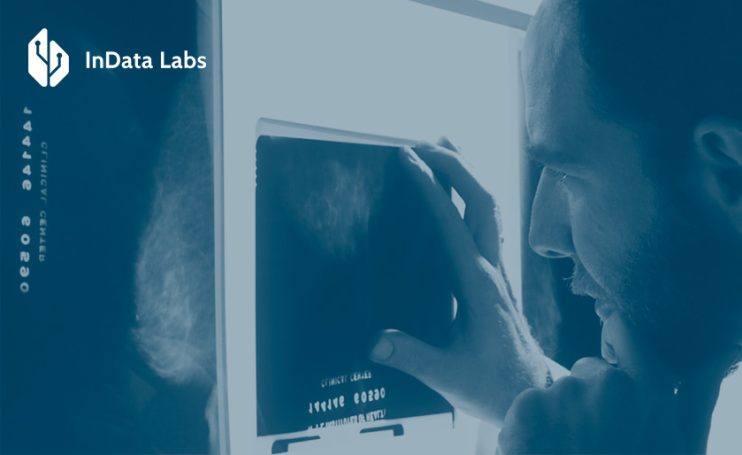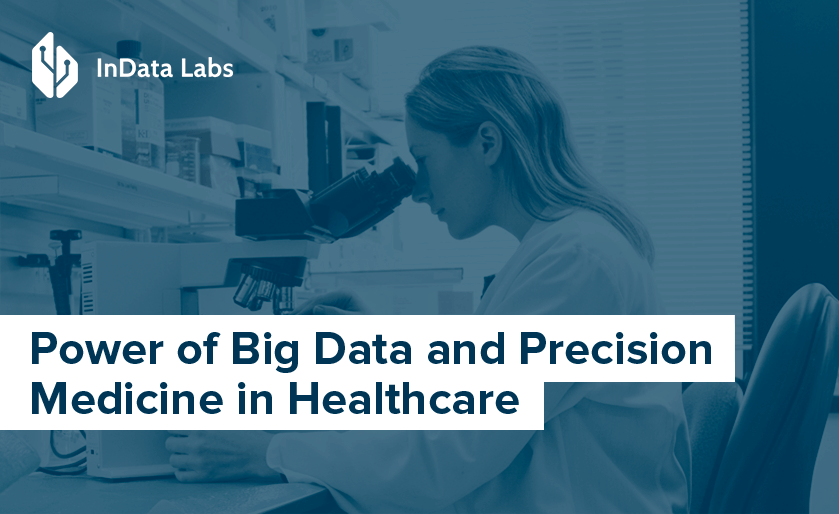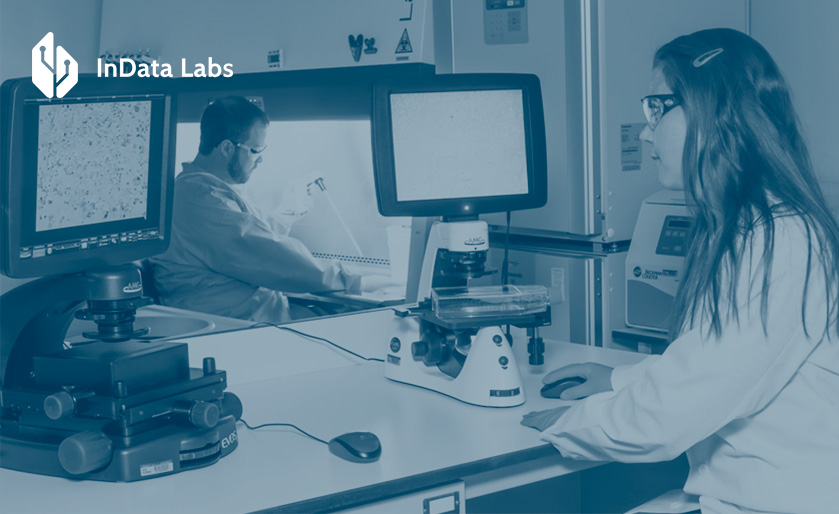Artificial intelligence has entered many fields, and the perspectives of AI in various business and industry sectors are bright. Recently, new technology has entered the most conservative industry – healthcare. AI use cases in healthcare are not limited to AI in CRM or other marketing efforts. AI in radiology is another case of using emerging technologies in healthcare.

Medical imaging is a popular diagnostic method across many specialties, but there is a global shortage of medical radiologists. Besides, there’s a nearly fifty-fold difference between low- and middle- to high-income countries – 1.9 vs. 97.9 radiologists per million people, respectively. However, AI in radiology can help to mitigate the shortage.
Artificial intelligence radiology systems can exceed human radiologists in terms of accuracy and effectiveness when detecting and diagnosing diseases via scan analysis. These capabilities sparked AI adoption in radiology departments across the globe. However, AI applications in radiology could also bring challenges.
We’ll examine the most common benefits of AI and barriers to help you make a grounded decision on AI implementation in radiology. But first things first.
What is AI in radiology
In radiology, AI software helps radiologists detect, diagnose, and treat medical conditions more efficiently and accurately. The world of radiology has seen a rapid transformation with the application of artificial intelligence (AI). AI has become the new frontier in radiology, opening up a world of possibilities.
As a result, AI changes how radiologists perform their work and interact with their peers and patients. In radiology, AI can bring substantial benefits ranging from helping doctors to deliver swifter diagnosing and optimal dosage treatment to advancing Big data and precision medicine.
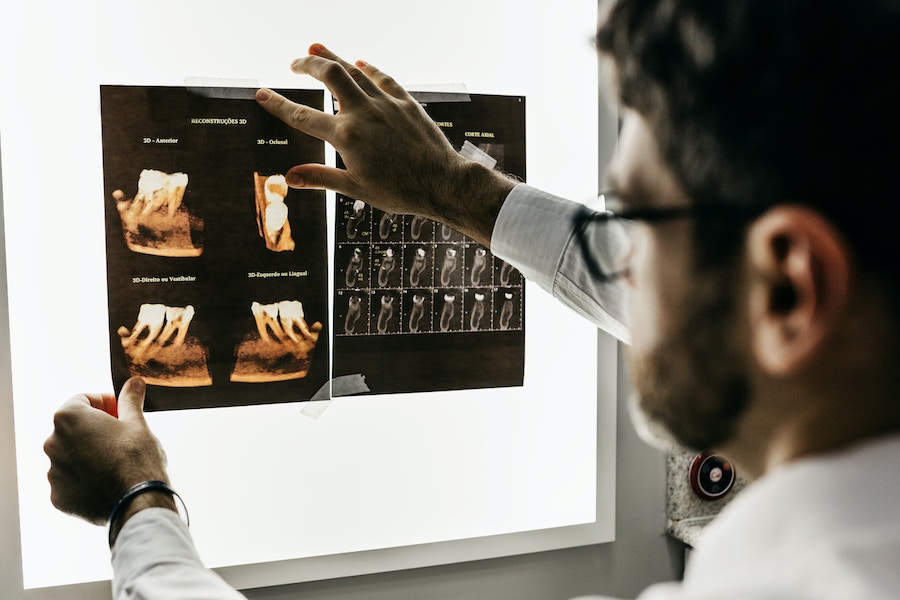
Source: Unsplash
AI in radiology: four benefits
Artificial intelligence in diagnostic radiology can bring substantial benefits ranging from helping doctors to streamline diagnostics and optimal treatment to achieving advanced accuracy.
AI solutions can also automate the report-writing process, allowing more consistent and accurate reports to be generated faster.
As for precision, according to a 2021 research paper on the topic, only 10% of automatically-generated reports contained inaccurate information. In addition, such AI-driven tools free up radiologists to focus on more complex cases. AI solutions can also reduce costs. By improving the diagnosis process, AI tool implementation can result in cost savings for both healthcare organizations and patients.
Let’s explore some real-life use cases.
Enhanced accuracy
AI tools can deliver similar or even greater accuracy rates than qualified radiologists. Well-trained machine learning radiology models can detect patterns the human eye can’t perceive. For example, an X-ray reading tool from the Northwestern Memorial Healthcare System (Chicago, Illinois) detected the coronavirus ten times faster than qualified thoracic radiologists. Moreover, the AI system accuracy is comparable to that of doctors: 82% against 76%- 81%.

Source: Unsplash
AI-driven image analysis solutions can also help radiologists improve the accuracy of ultrasound. This method, typically used for breast cancer diagnostics, is infamous for the high rate of false positives. AI-enabled solutions can decrease false positive rates by almost 40%. The technology also helps lower the rate of requested biopsies by 28%.
Improved diagnostics
AI solutions can help clinicians improve diagnosing. AI-assisted diagnosis can also help detect structural abnormalities in the heart, lungs, and brain. In the latter case, AI-driven tools identify abnormalities, such as tumors and developmental issues.
For example, AI algorithms can detect neurological abnormalities in retinal scans. This method is used for diagnosing Alzheimer’s disease, Parkinson’s disease, and amyotrophic lateral sclerosis (ALS).

Source: Unsplash
Machine learning for radiology can help clinicians improve diagnosing. In 2022, Yale School of Medicine researchers introduced an ML-driven model for diagnosing heart conditions. The solution assessed data from over two million electrocardiograms (ECGs) to detect heart rhythm and conduction conditions. It diagnosed one in six patients with heart rhythm disorder. The model can help clinicians see patterns that may go unrecognized, thus improving the quality of diagnostics.

Optimized radiation doses
Reducing radiation dose to a practical minimum is critical in pediatric radiology. Excessive radiation exposure can cause cancer in the pediatric population. A 2022 systematic survey looked into papers featuring AI-driven dose optimization for children and found 16 peer-reviewed studies on the topic. The researcher discovered that 8 of the featured machine learning algorithms could reduce the dose by 36-70%, potentially achieving a 95% reduction.
In addition, AI in diagnostic radiology can lower the detrimental effect of ionizing radiation on children without harming diagnostic information.
Advanced prediction capabilities
AI is also used for leveraging predictive analytics in radiology. AI algorithms detect trends in patient imaging data and predict outcomes. It could lead to more efficient treatments and better patient results. Additionally, it makes sense to marry Big data and radiology. AI algorithms can analyze large datasets, making discovering new insights from Big data in radiology easier.
AI-powered solutions for radiology can predict the risks of adverse events in patients, which fosters timely prevention. For example, the likelihood of a heart attack is usually predicted based on cardiovascular risk factors and scores. However, relying on those data doesn’t always work in patients with confirmed coronary artery disease.
In 2022, researchers from Cedar-Sinai Medical Center (Los Angeles, California) cooperated with the University of Edinburgh researchers to develop an AI model for predicting the risks of heart attacks in patients with coronary artery disease. The AI algorithm combined positron tomography emission (PTE) scans, angiography CT scans, and clinical data to assess the patients.
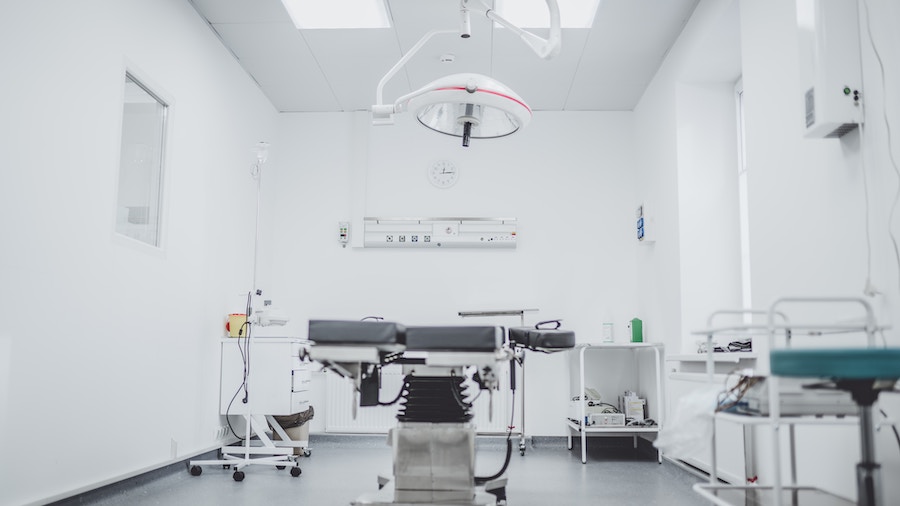
Source: Unsplash
The tool showed substantial improvement in predicting heart attacks over clinical data alone. However, combining the selected scan analysis with clinical data offered the most comprehensive outcome prediction method.
Moreover, AI-powered prognostic imaging can help provide physicians with better insight into the likelihood of successful treatment and long-term outcomes. A Big data radiology tool can detect patterns and identify signs of disease progression more accurately by analyzing medical imaging data. Using a solution driven by Big data and artificial intelligence can lead to earlier detection and improved treatment options.
Providing a second opinion
AI can provide a second opinion when radiologists disagree on a medical image, reducing the decision-making stress associated with complex cases. For example, during the coronavirus pandemic, researchers from Mount Sinai Health System in New York introduced an AI algorithm able to detect the disease in seemingly normal chest CT scans.
Researchers employed a combination of chest CT scans and patients’ medical histories to speed up the diagnostics and improve its precision. As a result, the algorithm concluded 17 out of 25 normal scans were COVID-positive.
The model worked as a second opinion when a chest CT image was either negative or demonstrated non-specific signs of an infection. When the algorithm recognized the image as COVID-positive, doctors could reconsider their diagnosis and provide due treatment relying on the algorithm’s judgment.
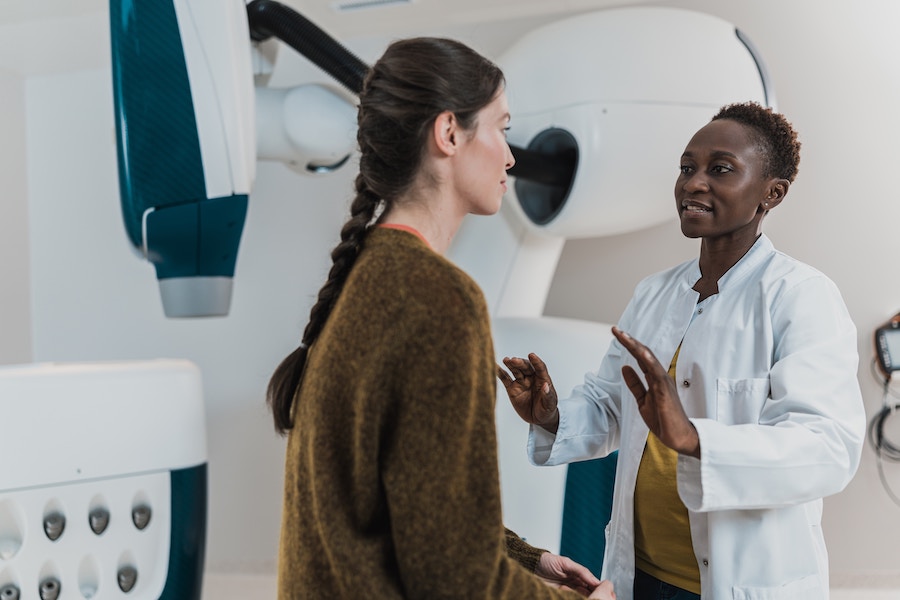
Source: Unsplash
Machine learning in radiology: four challenges and potential solutions
AI in radiology can streamline diagnosing and empower personalized care, thus improving patient outcomes and doctors’ efficiency. Nevertheless, the four challenges can hamper its adoption. Therefore, a clinic’s stakeholders should recur to AI consulting to mitigate the challenges effectively.
Insufficient infrastructure
AI implementation in radiology requires a robust digital infrastructure. However, the rates of digital transformation healthcare providers have reached still vary. In addition, many clinics still follow outdated security measures and operate siloed data, legacy hardware, and internal systems with insufficient interoperability. Deploying an AI-powered tool can exacerbate the situation, bringing additional hurdles.

Source: Unsplash
To resolve these issues, providers need to update their infrastructure gradually. For this matter, it’s better to team up with an experienced health IT vendor to ensure the process goes smoothly.
Potential risk underscoring
Modern applications of machine learning in radiology estimate the likelihood of a complication in a patient relying on their radiological image data. For example, an AI solution may conclude that some lesion in the image runs a 10% risk of being malignant. When in doubt, a radiologist could go for a biopsy to prove the diagnosis, but the artificial intelligence radiology solution considers the issue low-risk. Ultimately, such a solution doesn’t prescribe a biopsy, and a patient may have undetected cancer.
It is critical for developers and healthcare professionals to work in close collaboration. Insights from medical professionals can improve the performance of AI-based solutions.

Source: Unsplash
Doctors’ hesitation
Over the years of practice, doctors have grown accustomed to working with proven methods and practices, and the introduction of AI technologies in the field of radiology can stress them out. Radiologists can be afraid to lose their job due to the extended use of AI in the clinic. However, the more radiologists know about the future radiology technology, the less the fear of AI, a 2019 research states.
To improve human-machine work efficacy, healthcare providers should persuade their radiology specialists and other medical workers that AI in healthcare is a valuable assistant, not a replacement for human specialists.
The future of radiology is in effective human-machine collaboration. Though employing artificial intelligence in radiology can alter radiologists’ responsibilities, AI solutions will not make fully independent decisions, regardless of their implied accuracy and effectiveness. The final say will remain with human radiologists.
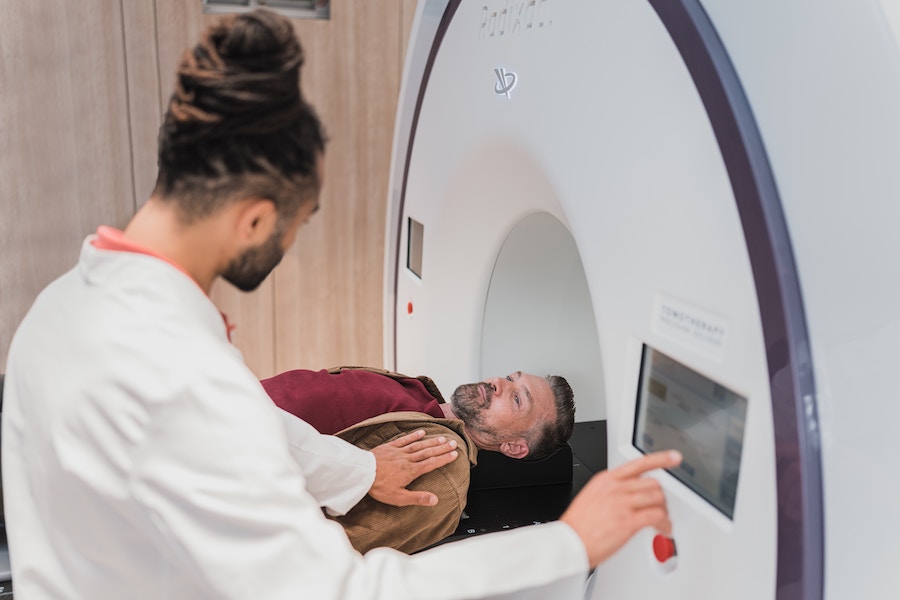
Source: Unsplash
Data quality
Data quality is critical for radiology. It is essential for training effective AI-driven models. Without high-quality labeled training datasets, it is impossible to train a machine learning for radiology model that can accurately diagnose diseases and provide treatment recommendations.
As for a viable solution to the challenge, digital transformation can help. The process is ongoing in many medical facilities. According to Deloitte’s 2023 Outlook for Healthcare, 92% of the survey participants from the healthcare sector believe accelerated transformation will have a moderate (63%) or great (29%) effect in their clinic. As the transformation extends, the need for quality data will grow further. With time, the majority of datasets will follow high-quality standards.
Machine learning in radiology
AI is a broad concept that denotes the ability of a computer to complete tasks that humans usually perform. Such tasks require intelligence, professional knowledge, and a certain degree of insightfulness that drive the decision-making process. So is it possible to replace humans with machines? No, it’s not.
Nevertheless, trained machine learning algorithms can mimic humans in this regard. This allows us to unite machine learning and radiology, for example.
Machine learning is the process of teaching a computer system how to “learn” from data, using algorithms to identify patterns and make decisions. Developed by qualified specialists in machine learning consulting, such algorithms can assist humans with data-intensive tasks, such as radiology image analysis.

Source: Unsplash
Future radiology technology
Artificial intelligence has been adopted in radiology departments across the globe, offering a wide range of potential applications. Radiology artificial intelligence impact factor is quite impressive. AI and machine learning can help reduce misdiagnosis rates and false-positive results. They can also help radiologists detect diseases more quickly and accurately.

Consequently, AI in radiology companies have emerged, promising better medical imaging, improved patient outcomes, and more efficient healthcare delivery. The ample spectrum of successful AI implementations proves that the future of AI in radiology is guaranteed. However, radiologists may need help shifting from well-established and learned practices to the new radiology setting enhanced with AI tools.
However, proper safeguards in place and an emphasis on human-machine collaboration can streamline the AI adoption process. It’s also vital that clinical leaders stress the importance of effective cooperation between radiologists, data scientists, and computer engineers for delivering and implementing robust machine learning radiology tools and streamlining radiology practice.
Artificial intelligence in radiology is set to revolutionize the field in the next two decades as the technology continues to evolve and become more accessible. Hence, the future of radiology enhanced with AI is promising.
Disrupt your healthcare organization with AI
Unlock the power of AI for your healthcare organization with our AI consultants. Contact us to discuss the details.
